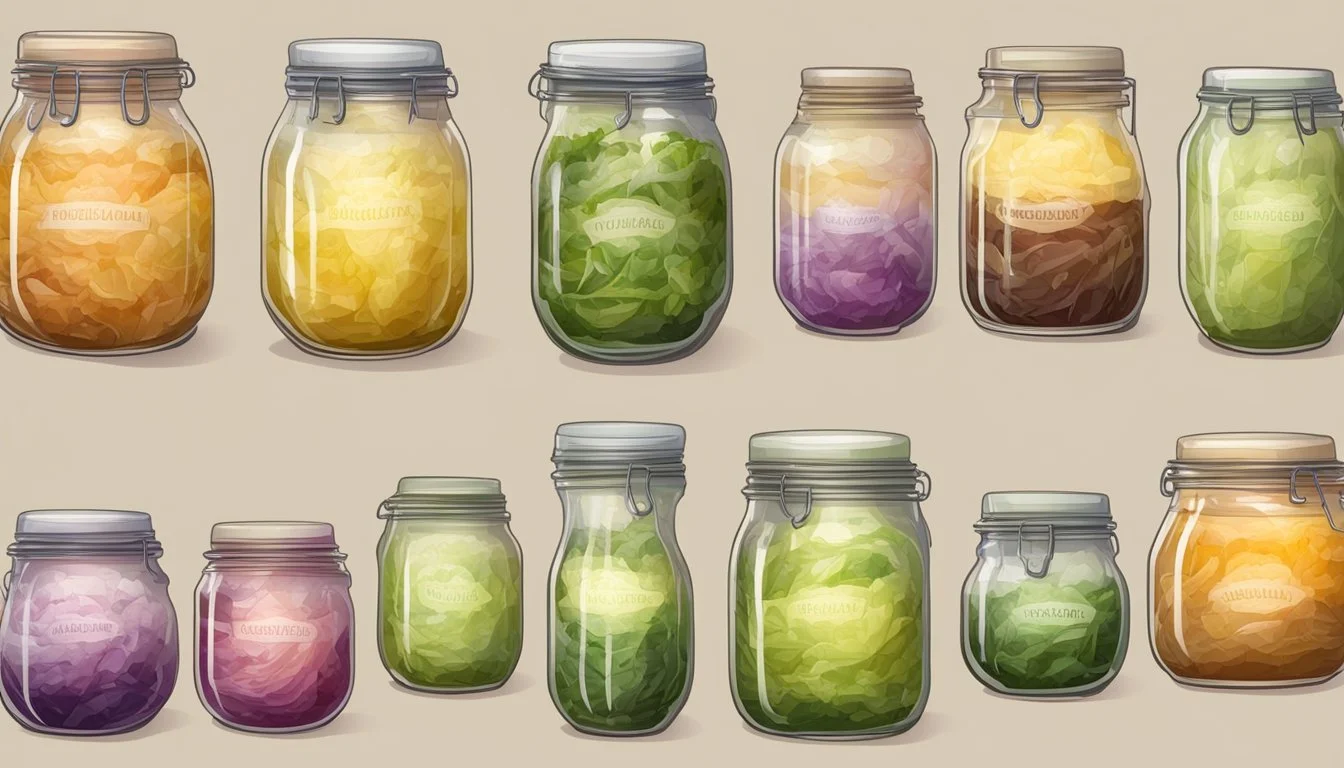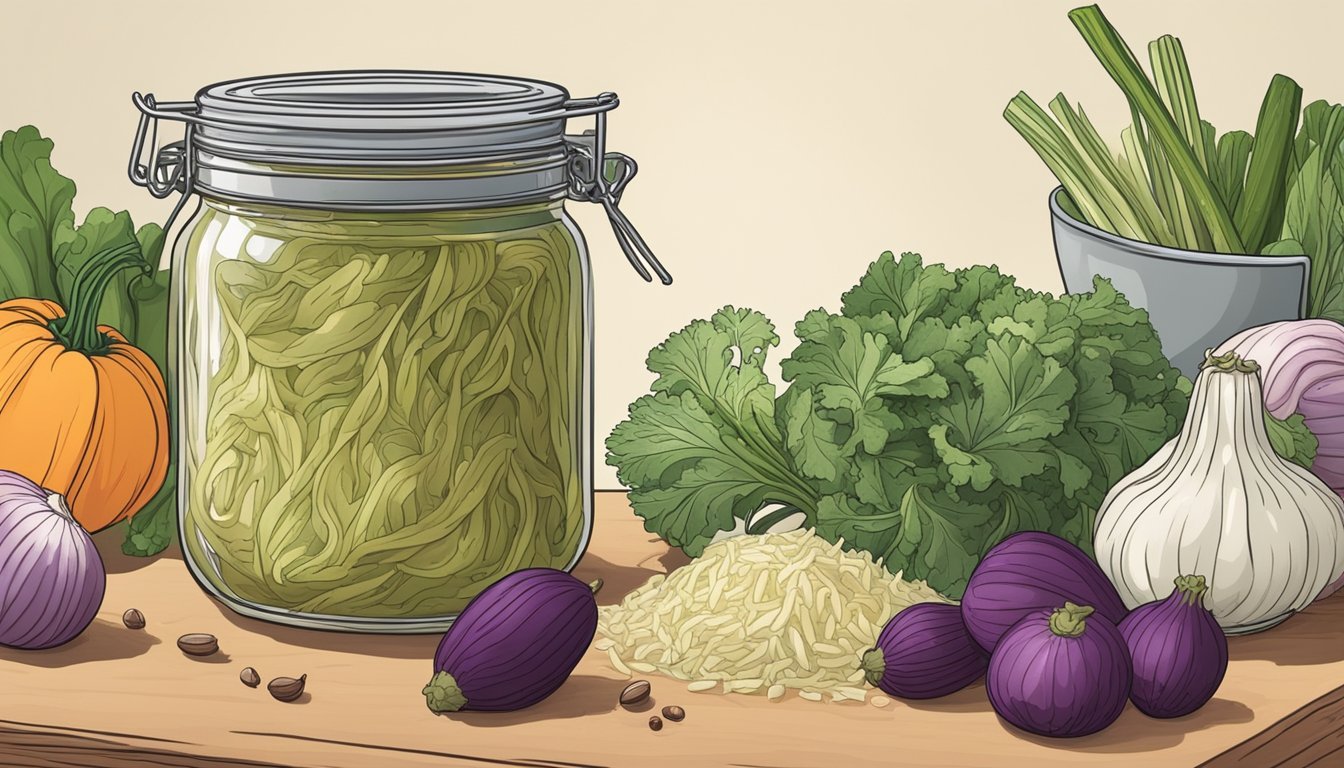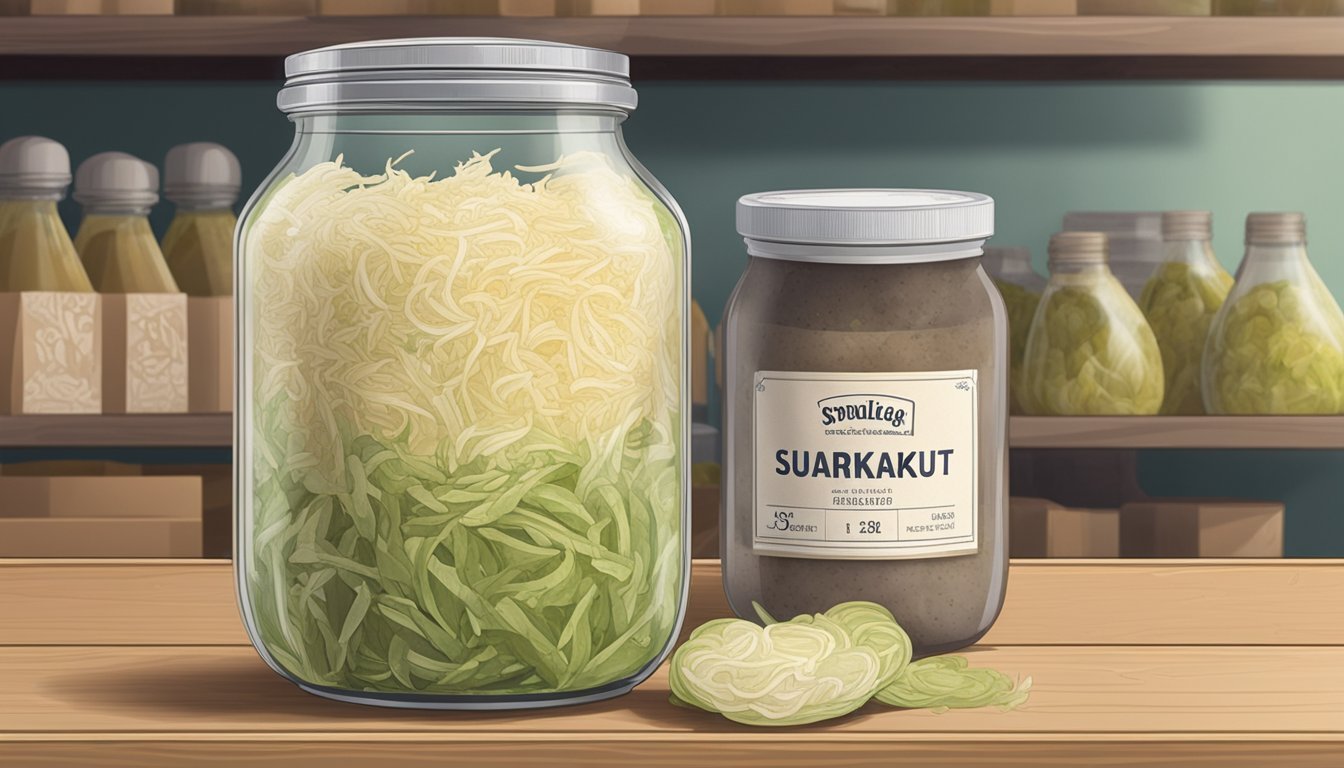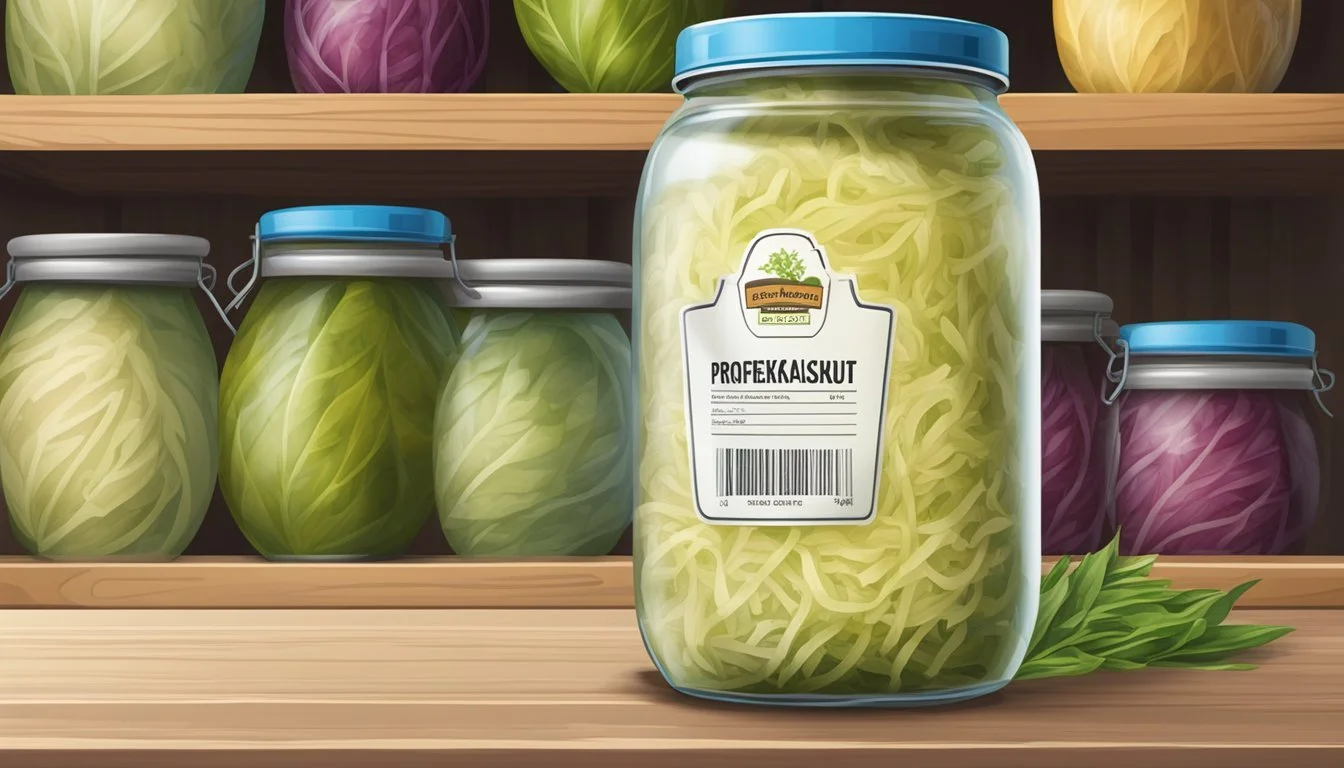Does Sauerkraut Go Bad?
Understanding Fermented Foods' Shelf Life
Sauerkraut, the traditionally fermented cabbage, has been a staple in many cuisines for centuries due to its distinctive sour flavor and health benefits. However, like most food items, sauerkraut is not impervious to spoilage. The long shelf life of sauerkraut is attributed to the fermentation process, where lactic acid bacteria preserve the cabbage in a way that can deter the growth of harmful microorganisms.
Typically, sauerkraut comes in two forms: pasteurized and unpasteurized. The pasteurized variety, often found on supermarket shelves, has a shorter lifespan, particularly once opened, because the pasteurization process kills both harmful and beneficial bacteria, ceasing the fermentation. Conversely, unpasteurized sauerkraut, which contains live cultures, can last for several months under the right conditions—submerged in its brine and refrigerated—since the live bacteria continue to act as a natural preservative.
Over time, sauerkraut may continue to ferment slowly, potentially altering its taste by becoming sourer. Indications that sauerkraut has gone bad include an unpleasant odor, discoloration, or any sign of mold. Consumers are urged to trust their senses and err on the side of caution, disposing of any sauerkraut that shows signs of spoilage.
Understanding Sauerkraut
Sauerkraut is a traditional fermented cabbage dish that carries a range of health benefits. It is made through a process of lacto-fermentation in which the natural bacteria found on cabbage leaves produce lactic acid.
Origins and Basics
Sauerkraut originates from China, over 2,000 years ago, before spreading to Europe where it has been embraced, particularly in German cuisine. The basic ingredients of sauerkraut are simple: cabbage and salt. During the fermentation process, these two ingredients transform the cabbage into a tangy condiment. The process begins with the cabbage being finely shredded, mixed with salt, and then tightly packed into a fermentation vessel. Over time, the salt draws out water from the cabbage, creating a brine that submerges the vegetable. In this anaerobic environment, naturally occurring bacteria start the fermentation process, converting sugars into lactic acid, which acts as a natural preservative and gives sauerkraut its distinctive sour flavor.
Health Benefits
Sauerkraut is rich in probiotics, beneficial bacteria that play an important role in gut health and digestion. These probiotics help balance the gut microbiota, which can enhance the digestive system and boost immunity. Sauerkraut is also a good source of dietary fiber, which supports regular digestion, and it provides a variety of vitamins such as vitamin C and certain B vitamins. The fermented cabbage contains antioxidants that may reduce inflammation and promote overall wellness. Regular consumption of sauerkraut could be a worthwhile addition to a diet focusing on healthy digestion and nutrient intake.
Identifying Fresh vs. Spoiled Sauerkraut
When examining sauerkraut for freshness, it is crucial to consider its appearance, smell, taste, and texture, as these factors are indicative of whether the sauerkraut is still good to consume or has spoiled.
Appearance
Fresh sauerkraut typically has a pale to golden yellow color, and should be submerged in clear brine. Spoiled sauerkraut may have darkened or discolored patches. The presence of greenish-blue specks indicates mold, which is a clear sign of spoilage.
Smell
Sauerkraut in good condition emits a tangy, sour aroma, a byproduct of the fermentation process. An unpleasant smell, such as rotten or offensively strong odors, suggests that the sauerkraut has gone bad and should be discarded.
Taste
While fresh sauerkraut has a distinctive sour flavor due to fermentation, it should not taste overly sour or unpleasant in any way. If the taste is off or much too sour than what is typical for fermented cabbage, it is likely an indication of spoilage.
Texture
The texture of fresh sauerkraut is somewhat crisp. If the texture has turned soft or there is a development of slime, these are signs that the sauerkraut has experienced spoilage and is no longer suitable for consumption.
Storage Guidelines
To maintain the quality and extend the lifespan of sauerkraut, proper storage is essential. The following guidelines provide specific methods to store sauerkraut effectively.
Ideal Conditions
Sauerkraut thrives in cool, dry places when unopened. A pantry or a kitchen cabinet away from direct sunlight and heat sources is ideal for unrefrigerated sauerkraut. Once opened, ensuring the product remains submerged in its brine within an airtight container prevents drying out and potential spoilage.
Refrigeration
Once opened, sauerkraut should be kept in the refrigerator. Refrigerated sauerkraut ideally resides in glass jars or plastic containers with tight-sealing lids. These containers help to keep the sauerkraut submerged, maintain a consistent temperature, and prevent exposure to air, all of which are crucial to prevent spoilage.
Shelf Life
Unopened, sauerkraut has a lengthy shelf life, which can range from several months to longer, depending on whether it's pasteurized. Refrigerated sauerkraut, once opened, typically lasts for four to six months. However, homemade or unpasteurized versions may have a shorter shelf life, and should generally be consumed within a month of opening if not refrigerated.
Freezing
Freezing is a viable option for long-term storage of sauerkraut, extending its shelf life up to 12 to 18 months. To freeze, one should use a freezer-safe airtight container or a heavy-duty freezer bag. Note that freezing may alter the texture of the sauerkraut, which may not be preferable for all uses. Defrost in the refrigerator before use to maintain the best quality.
Sauerkraut Varieties and Their Impact on Spoilage
Sauerkraut can vary greatly in its preparation and preservation methods, which can affect its shelf life and susceptibility to spoilage. Different varieties come with distinct characteristics that influence how they should be stored and how long they might last before going bad.
Homemade vs. Store-Bought
Homemade Sauerkraut:
More prone to spoilage due to variability in preparation methods and environments.
Lacks preservatives often found in commercial products, which can limit its shelf life.
Store-Bought Sauerkraut:
Generally has a more consistent quality and may contain preservatives that extend its longevity.
Often sealed tighter and stored in more controlled conditions before opening, reducing the risk of spoilage.
Pasteurized vs. Unpasteurized
Pasteurized Sauerkraut:
Undergoes a heating process that kills bacteria, which can prevent spoilage but may also destroy beneficial probiotics.
Typically has a longer shelf life compared to unpasteurized varieties.
Unpasteurized Sauerkraut:
Contains live cultures and probiotics which can continue the fermentation process, potentially affecting shelf life.
More susceptible to spoilage if not stored properly; refrigeration is essential to preserve its quality.
For both types of sauerkraut, sauerkraut storage is key. They should be kept airtight, covered with brine, and stored in a cool environment to minimize sauerkraut spoilage. The exact shelf life will depend on these factors, but generally, unpasteurized sauerkraut can last for several months under optimal conditions, while pasteurized can potentially last even longer.
Recognizing and Preventing Spoilage
When considering the longevity of sauerkraut, awareness of spoilage signs and adherence to preventive measures are crucial. Recognizing bacterial growth and following key preservation tips can significantly extend the edible life of this fermented food.
Bacterial Growth
Sauerkraut's sour flavor is a result of fermentation by lactic acid bacteria, which are beneficial bacteria. These bacteria create an acidic environment that usually suppresses harmful microbial development. However, should these good bacteria fail to maintain the necessary acidity, harmful bacteria and mold growth may occur. Indicators of contamination include:
A high pH level indicating reduced acidity.
Visible mold or slime development on the surface.
A softening in texture, deviating from the typical crispness.
An off-putting smell, distinct from the characteristic tangy aroma.
Prevention Tips
Maintaining the sauerkraut's safety and quality largely revolves around proper storage and handling to prevent food poisoning and other health risks. Here’s how to protect the sauerkraut and maximize its shelf life:
Always ensure that sauerkraut is submerged in brine, as a dry top layer can foster spoilage.
Store sauerkraut in a cool and dark place, ideally the refrigerator, to deter bacterial growth and mold.
Avoid contamination by using clean utensils when serving or handling sauerkraut.
Keep storage temperatures consistent to prevent harmful bacteria from thriving in high temperatures or humid environments.
Monitor the container's seal—a tight seal reduces the risk of contamination.
Packaging and Its Effects on Sauerkraut
The longevity and quality of sauerkraut are significantly influenced by its packaging. Different container types and the way sauerkraut is sealed and exposed to air can either preserve its shelf stability or lead to premature spoilage.
Container Types
Sauerkraut packaging varies, with each type affecting its shelf life. Glass jars and food-grade plastic containers are commonly used for commercial sauerkraut, providing an anaerobic environment conducive to preservation. Traditional canning methods often involve glass jars with a metal lid, sealed using a pressure canner to ensure sterility and an extended shelf life. For homemade sauerkraut, it's crucial that containers be sterilized properly before use to prevent contamination.
Commercial Sauerkraut:
Glass jars
Food-grade plastic containers
Homemade Sauerkraut:
Sterilized glass jars
Sealed with a pressure canner
Sealing and Exposure
The method of sealing sauerkraut is paramount for its preservation. Sauerkraut must be kept tightly sealed to prevent exposure to air, which can introduce unwanted microorganisms and lead to spoilage. Whether in original packaging or transferred to a different container, the sauerkraut should remain submerged in its brine to limit oxygen contact.
Optimal Sealing:
Ensure the sauerkraut is fully submerged in brine
Use airtight lids to minimize exposure to air
Storing sauerkraut in a kitchen cabinet or other storage area should only be considered if it is commercially packaged in shelf-stable tins. Once opened, preservation relies on refrigeration and keeping the container tightly sealed to maintain quality.
Consumption and Usage
Sauerkraut, with its tangy flavor and probiotic qualities, serves not only as a condiment but also as a versatile side dish. When incorporating it into meals or pairing it with suitable condiments, one should appreciate its distinctive character.
Incorporating Sauerkraut into Meals
Sauerkraut can be enjoyed in a variety of ways, often complementing the flavors of meats and starchy foods. It is traditionally used as a topping on sausages and hot dogs, enhancing these dishes with its sour taste. Due to its probiotic nature, sauerkraut is also valued for its health benefits and is incorporated into salads, sandwiches, and even soups to add a nutritional boost. When using fresh cabbage in making homemade sauerkraut, one ensures the benefit of natural fermentation, which can enhance the taste of a simple side dish.
Suitable Condiments
Sauerkraut pairs well with a range of condiments, enhancing its flavor profile. Common pairings include:
Mustard: Offers a spicy counterpoint to sauerkraut's sourness.
Ketchup: Adds a sweet note, balancing the overall taste.
Mayonnaise: When mixed with sauerkraut, it creates a creamy texture that is excellent on sandwiches.
All of these condiments should be used in moderation to not overpower the nuance of sauerkraut's flavor.
Safety and Health Considerations
When considering the safety and health aspects of sauerkraut consumption, it is essential to understand the implications of best-by and expiration dates, as well as the impact of storage conditions like direct sunlight and temperature.
Best-by vs. Expiration Dates
Best-by Date: This is the manufacturer's estimation of when the sauerkraut will be at its peak quality. Consuming sauerkraut after the best-by date does not necessarily mean it is unsafe, but it may not have the optimal taste or nutrient profile.
Expiration Date: This date indicates the point at which the product may no longer be safe to consume. It is critical to check the packaging for these dates to ensure the safety of the sauerkraut.
Date Type Purpose Safety Consideration Best-by Date Peak quality indicator Safe if stored properly beyond this date Expiration Date Estimated safety threshold Potentially unsafe beyond this date
Direct Sunlight and Temperature Effects
Direct Sunlight: Stored sauerkraut should be kept out of direct sunlight. Exposure to sunlight can lead to temperature increases, which may accelerate spoilage and potentially foster the growth of harmful bacteria.
Temperature: Maintaining a consistent, cool temperature is vital for the longevity of sauerkraut. It should ideally be refrigerated; optimal storage conditions include a temperature range between 35°F (2°C) and 38°F (3°C) to preserve its safety and quality.
Refrigeration: Necessary to slow down fermentation and prevent spoilage.
Temperature Fluctuations: Can damage the preservation process, making the sauerkraut more susceptible to spoilage.
By adhering to appropriate storage guidelines in terms of temperature and light exposure and by understanding and following label dates, consumers can safely enjoy sauerkraut.








